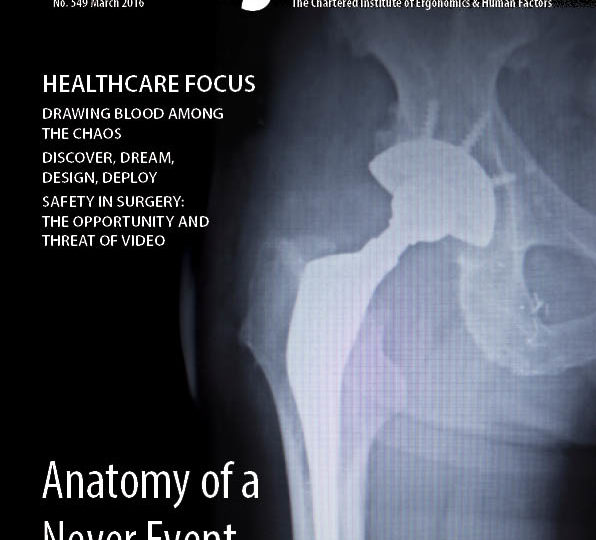
Ideas are flowing fast for the CIEHF’s new White Paper on Human Factors in Healthcare.
We announced the project at the Institute’s Ergonomics & Human Factors Conference in April and held a stakeholders workshop at the end of May. It’s great to see how many people are interested in this project. I’m leading the project, with Dr Alexandra Lang (lead for CIEHF’s Healthcare Sector Group) and we’re working very closely with Dr Brian Edwards (lead for the CIEHF’s Pharmaceutical Special Interest Group).
We are taking an ergonomic approach by keeping the messages clear, focused and usable. Our participatory process involves taking the White Paper on the road during development (up to Christmas 2017) to maximise inclusive design for both content and media interfaces. We are keen to explore and use different media interfaces so please email Sue, Alex or Tina if you have examples, ideas and suggestions for media interfaces.
The first message is What is HFE?
– Human Factors / Ergonomics (HFE) is at the heart of safety design.
– It’s about helping people to do the right thing and making it impossible or hard to do the wrong thing. HFE principles do not focus on user or human error but see ‘use error’ as a symptom of bad design.
– HFE is a specific way of ‘thinking and doing’ by understanding what can be done to make the world better to achieve improved safety, performance and experience.
– HFE adds depth of understanding to healthcare interactions and organisations with principles, theory and practice for systems and design of human interfaces for tasks, activities and environments.
Future messages will focus on:
– How HFE is implemented in practice
– What are systems?
– Brilliant HFE Basics: upstream, proactive, iterative
– How to do HFE
– Who does HFE
– HFE in Healthcare Vision for 2037: what good looks like
Professor Sue Hignett



